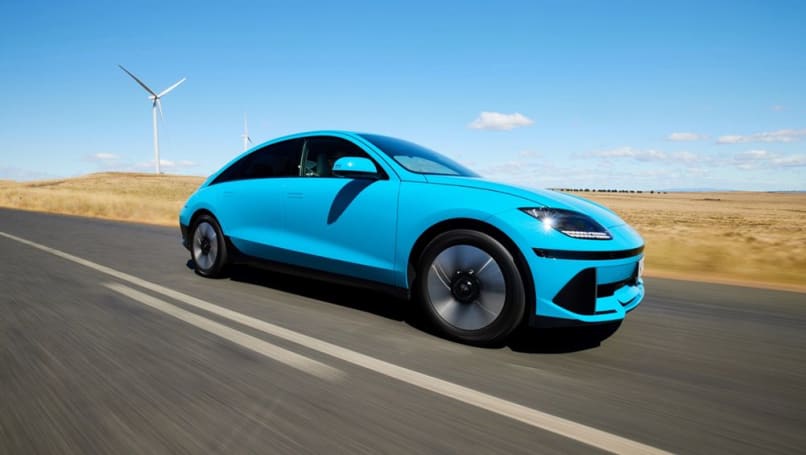
Holden class action! Holden Commodore, Colorado, Trailblazer, Caprice and more swept up in alleged faulty automatic transmission saga
Law firm Maurice Blackburn has launched a class action lawsuit against General...
Browse over 9,000 car reviews

Tesla has just revealed that it’ll be bringing out a totally new model and this one could be the most affordable ever.
It may even be Australia’s cheapest electric vehicle when it arrives. The truth is, the price will probably still put it out of reach for many Aussies - just like the cost of all electric cars. So why do electric cars cost so much and is it worth waiting for the price to come down?
Yep, if you look at how much EVs cost compared to their petrol-powered equals it seems as if electric cars are only for rich people.
Take the MG ZS for example. It’s a small SUV and the petrol version in the Excite grade costs $23,990 drive-away. The electric version in the Excite grade is $44,990 drive-away. You could very nearly buy two petrol ones for that price.
And the ZS EV is one of the cheapest electric cars on sale in Australia. Only the GWM Ora is more affordable but by just $500.
For many Aussies, $40K is way outside the budget and so a new electric vehicle is unattainable.
Even if you do have a bit more money to spend, you’ll still feel the electric car premium sting. Look at these prices: a Nissan Leaf is $50,990 before on-road costs, a Mazda MX-30 is $65,610, a Kia EV6 starts at $72,590 and a Hyundai Ioniq 6 begins at $74K. And these aren’t even prestige brands.
So why do electric cars cost so much? Hyundai’s senior manager of Future Mobility Scott Nargar said the technology in electric cars, and particularly the battery, are expensive and this cost is passed onto the consumer.
“You’re basically paying for that technology,” Nargar said. “The electric motors, the batteries especially, are quite expensive.”

“Everybody is after the same very limited supply of raw materials for batteries. There are already very established mining industries for cobalt and copper, but it’s the lithium which goes into lithium-ion batteries which adds that big cost to them.”
Lithium-ion batteries are the most common type of electric vehicle battery and are chosen for their combination of high density and light weight.
Nargar said that as electric cars have become more popular the batteries have increased in price.
“There’s about six different battery manufacturers and huge demand for a limited amount of batteries.”
Like Hyundai, Kia has seen electric vehicles take prices where no Kia has gone before. The top grades of the EV6 push $100K and the upcoming EV9 large SUV will be as much as $130,000.

Kia Australia’s product manager Roland Rivero points to the same reasons for the price of electric vehicles.
“Battery costs (raw materials which make up the battery) aren’t coming down and supply in general has been tight relative to demand,” he said.
Rivero also mentioned that currently Kia's electric vehicles should be seen as 'halo' cars which sit at the top of the brand's range.
As for when electric vehicles will cost the same as their petrol versions, Rivero believes it will happen, but just don’t hold your breath.
“EVs will become more affordable over time, but not at parity with internal combustion engine cars any time soon.”

Hyundai’s Nargar agrees. He said the cost of electric vehicles will come down but only once the all-important lithium becomes more readily available and once the industry reaches a point where the economy of scale means the technology and components that go into making electric cars more affordable.
“How can the average mum and dad afford an EV today? They probably can’t, but that will change as we ramp up volumes. Everything comes down to economies of scale. When you go from Hyundai building tens of thousands to hundreds of thousands to millions of electric cars, that‘s when economies of scale come in and you can negotiate harder for the same component,” he said.
“And that goes for cooling systems, the electric motors, the control systems, the electric harnesses and everything that goes with it, we’re still doing things at very low volumes.”
As for when the price of electric vehicles will reach parity with their petrol equivalents, Nargar said nobody knows, but like Riviero said, it won’t be for some time.
“As for getting to a similar price to petrol cars - I don’t know when that is, and the industry doesn’t either. Five or 10 years ago people might have thrown around dates like 2025 or 2030 but we don’t know - it all depends on the supply of natural resources,” Nargar said.

“There are a lot of big companies that will start mining lithium here in Australia in 2026 or 2027 and a number of global car manufacturers have already lined up with them. But we’re not going to see big changes until they start mining - we’re not there right now.
“This mining doesn't happen overnight, the equipment, the refining, the supply chains all need to be built up. So I don't think we're going to see cost parity for many, many years until you see ethical and sustainable safe mining across a number of countries.”
So there you have it, the cost of an electric vehicle is expensive because they are expensive to make. Not only that, but there doesn't appear to be much worth in waiting for the price of new electric vehicles to come down because you could be waiting at least until the end of the decade.
So what are your options if you only have $25,000 to spend. Well there are plenty of good cars like a Mitsubishi ASX or maybe a second-hard electric car - but what are the risks involved in buying a used EV? That’s another story.
Comments